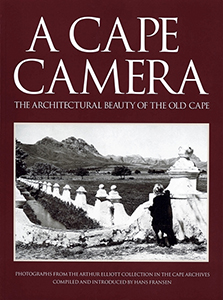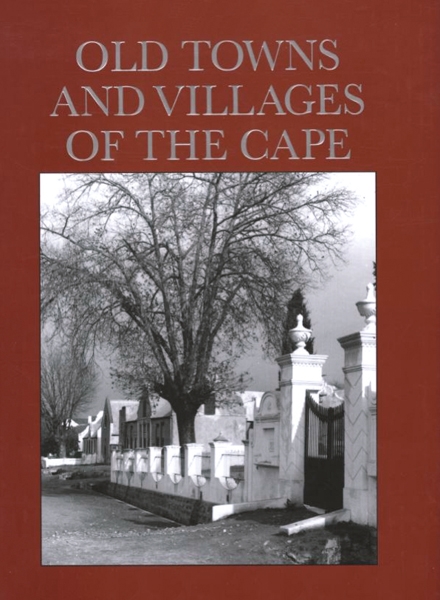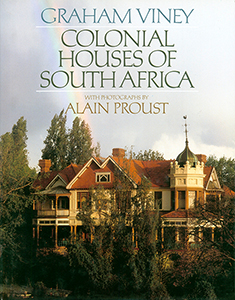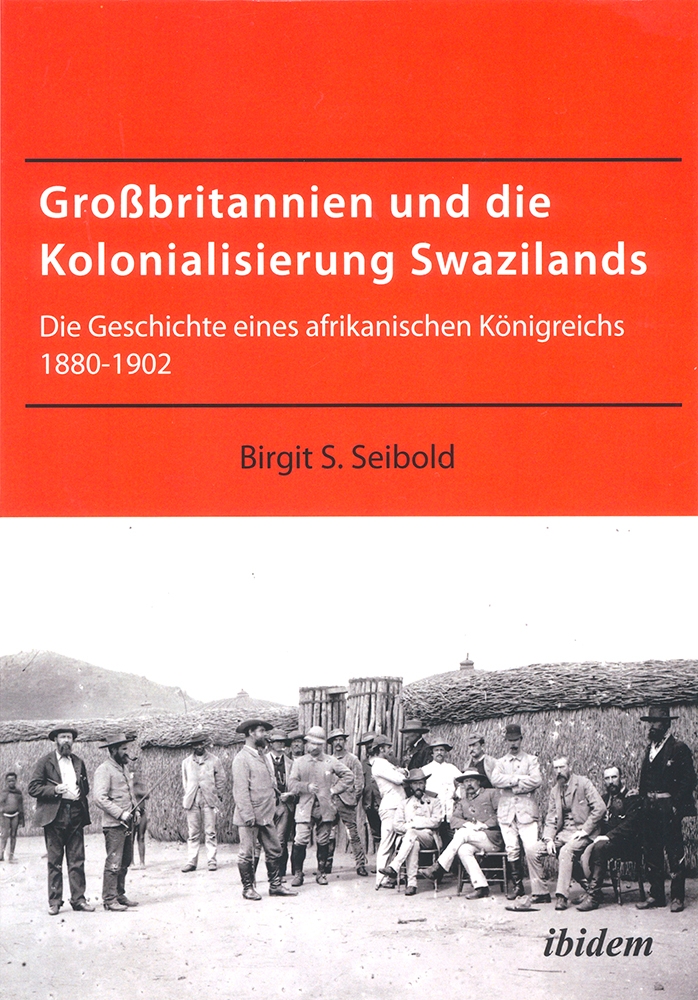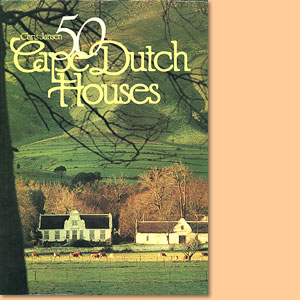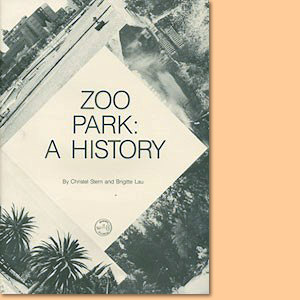A Cape Camera, by Hans Fransen
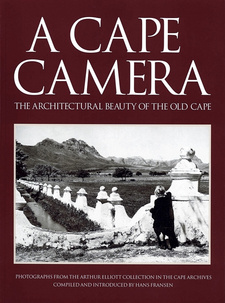
A Cape Camera: The Architectural Beauty of the Old Cape, by Hans Fransen. Jonathan Ball Publishers SA. Cape Town, South Africa 2013. ISBN 9780868522210 / ISBN 978-0-86852-221-0
Arthur Elliott's photographs that constitute his 'early architecture' section, and of which a selection of the best pictures features in Hans Fransen's book, A Cape Camera, nearly all represent a style popularly known as 'Cape Dutch' architecture.
The Architectural Heritage of the Cape
It is a style that found its origin and culmination during the century and a half that the Cape was under Dutch administration. Hence its popular name, which set i( apart from the more recent Cape 'English' styles of architecture, much as 'Cape Dutch' people denoted those inhabitants of the settlement whom we would call the Afrikaners. Like the Afrikaners, the origins of this style of buildings were far from exclusively Dutch. Jan van der Meulen has tried to prove - and not entirely without success - that many of its elements can be traced to Germany. Many, perhaps half, of the ancestors of the Afrikaners hailed from Germany, not Holland. We are not going to dwell on this issue, which is still hotly debated today. Settlers of German origin often arrived here via Holland and were often already partly 'Hollandised' when they arrived here, or became so within months, so it hardly concerns us here whether a particular feature of old Cape architecture had its roots in Holland or in neighbouring Germany - areas which were strongly interrelated anyway. We may be forgiven, therefore, if we happen to refer to the term 'Cape Dutch' as one which may be as inaccurate, yet as clear, as terms such as 'Gothic' or 'Baroque'.
'Cape Dutch': A True Vernacular
The Cape Dutch style was a true folk style in the sense that it was the universal building idiom in use by the Cape settlers of the 18th century. While the 19th century, even in the western Cape, saw several architectural styles in use simultaneously - Regency, Georgian, the Gothic, Greek and Egyptian Revivals, and indeed late Cape Dutch - the 18th was Cape Dutch and nothing but Cape Dutch. It was precisely this quality of a style as a true vernacular, as common to its community as its language, that allowed Cape Dutch architecture to resist for so long the inroads of all the other 19th century architectural modes. Until half a century into die 'English' period, Cape Dutch remained the dominant style in villages and country areas of the western Cape, with only minor details betraying the influence of 'alien' styles. In some areas elongated, plastered and whitewashed, thatch-roofed and gabled farm and village dwellings were still erected as a matter of course in the 1870s and 1880s. Thus Cape Dutch completed a full two centuries as a singularly uniform and constant building tradition. The basic - and enduring - elements of this building tradition are very simple, and must have become established during the first few decades of the Cape colonial settlement when available building skills and materials were strictly limited. Buildings like the Castle of Good Hope and possibly governor's estates such as the original Constantia and Vergelegen were exceptions, built partly of imported materials and by Company-employed craftsmen. But the free burghers had no such privileges when building their first houses, taverns or farm dwellings and had to make do with local materials - koffiekiip, clay or sun-dried bricks, thatch, lime from shells - and initially unskilled labour. [...]
This is an excerpt from the book: A Cape Camera, by Hans Fransen
Title: A Cape Camera
Subtitle: The Architectural Beauty of the Old Cape. Photographs from the Arthur Elliott Collection in the Cape Archives
Author: Hans Fransen
Publisher: Jonathan Ball Publishers SA
Cape Town, South Africa 2013
ISBN 9780868522210 / ISBN 978-0-86852-221-0
Softcover, 25 x 36 cm, 224 pages, numerous b/w photos
Fransen, Hans im Namibiana-Buchangebot
A Cape Camera
A Cape Camera presents the architectural environment at the Cape as it existed in the early decades of the century and was recorded by Arthur Elliott (1870-1938).
Old Towns and Villages of the Cape
This is the first comprehensive study of the physical history of the old towns and villages of the former Cape Colony.
Weitere Buchempfehlungen
Colonial Houses of South Africa
Colonial Houses of South Africa shows 23 houses out of South Africa's past, varying in character, are explored here in depth.
Großbritannien und die Kolonialisierung Swazilands
Großbritannien und die Kolonialisierung Swazilands: die Geschichte eines afrikanischen Königreichs 1880-1902.
Zoo Park: A History. Documentation of the former Zoo Park (1887-1958) in the center of Windhoek.
The original Zoo Park architecture (1887-1958) has vanished. The Zoo Park is located in the center of Windhoek, this is its history documentation.

